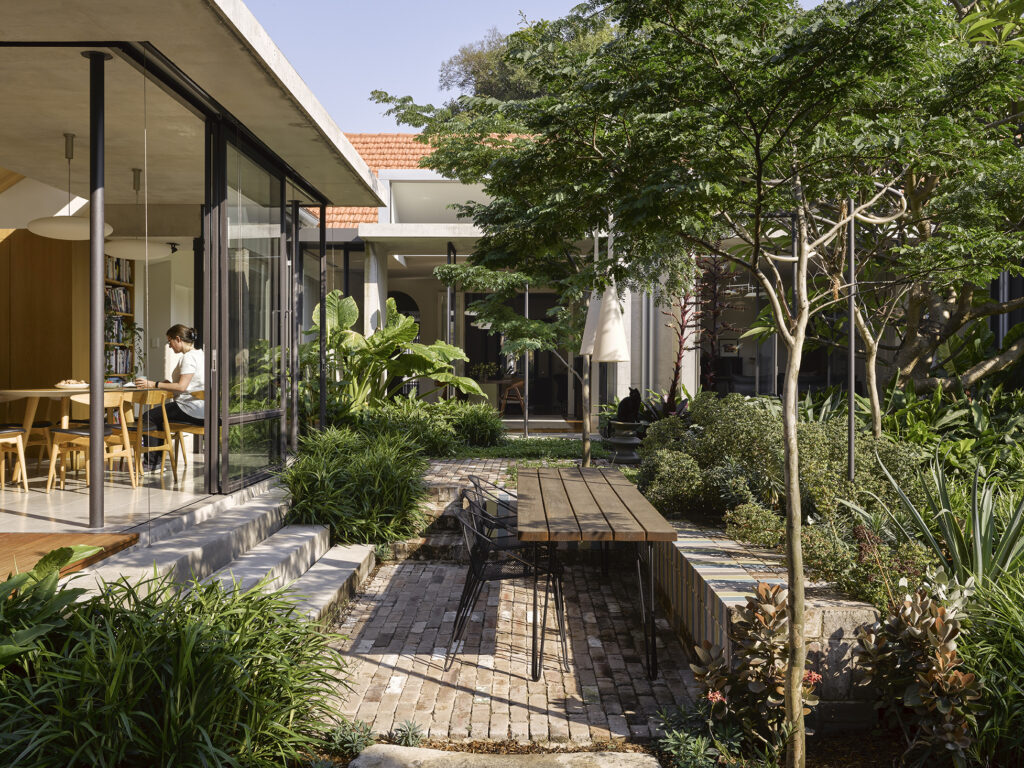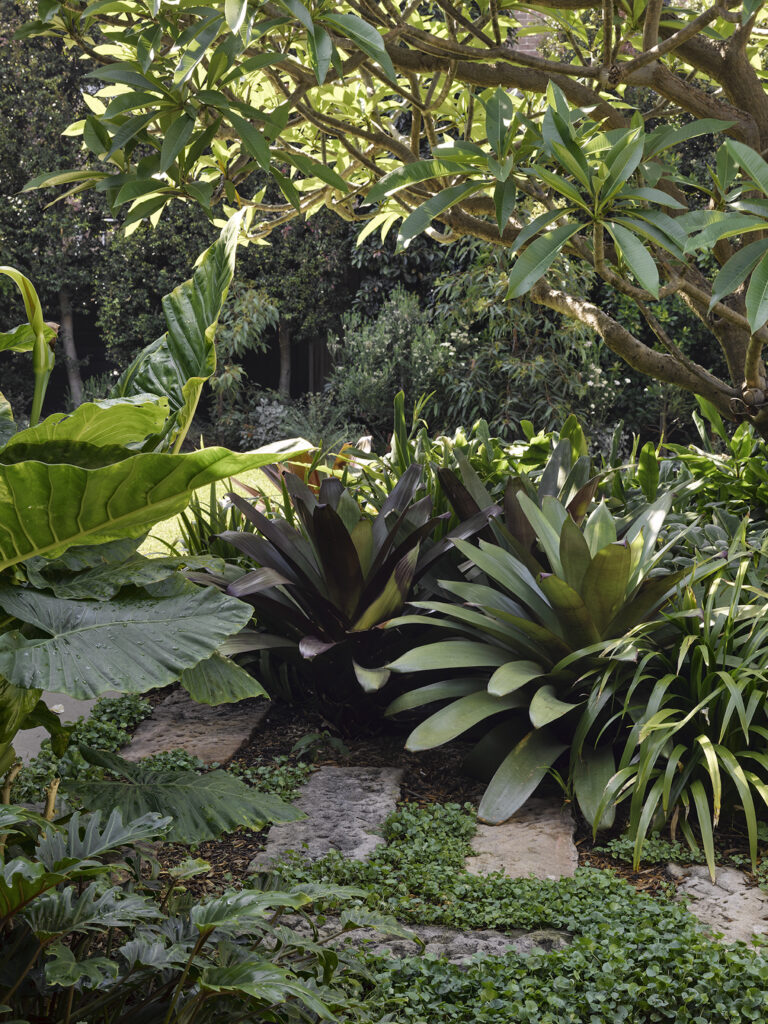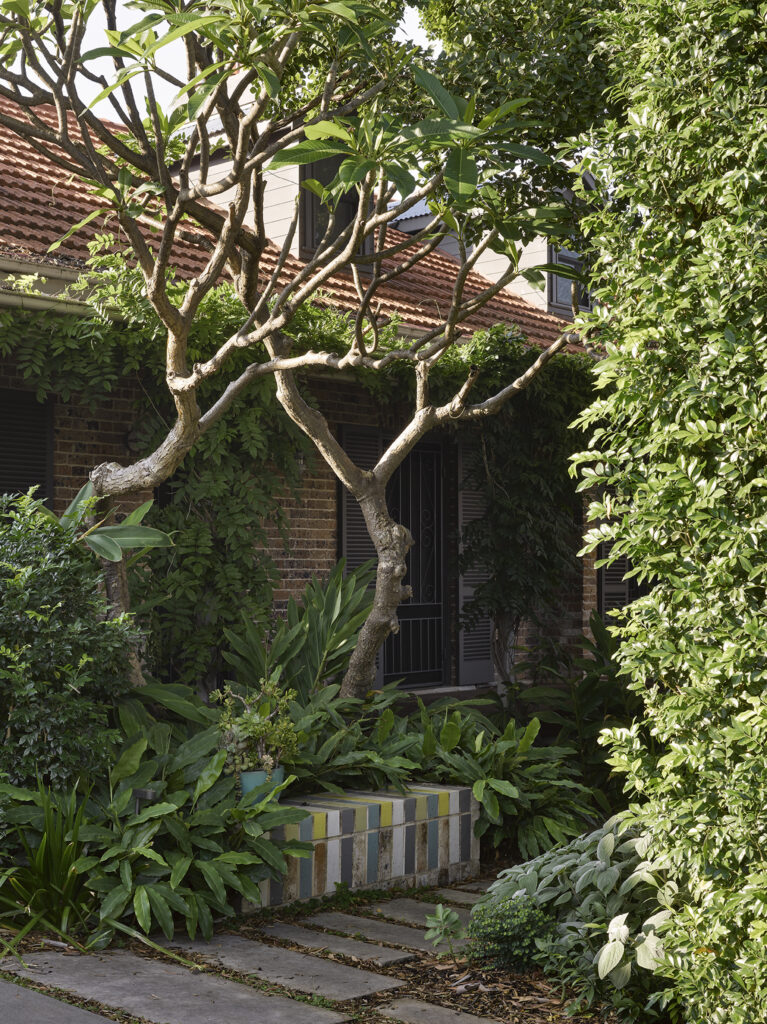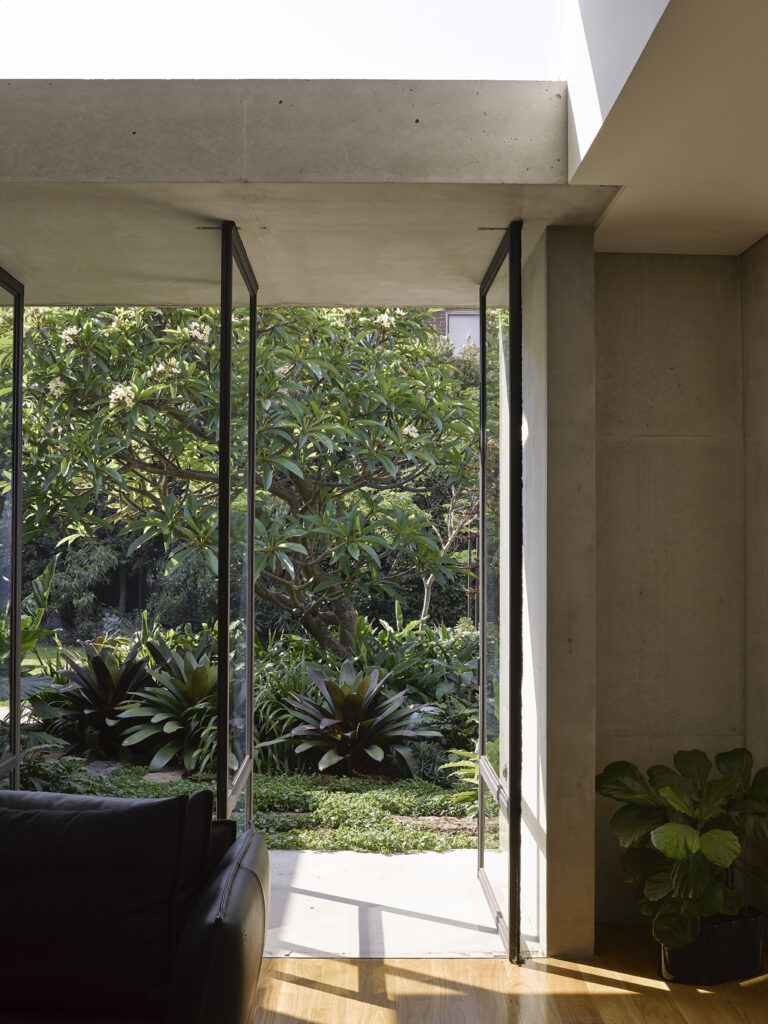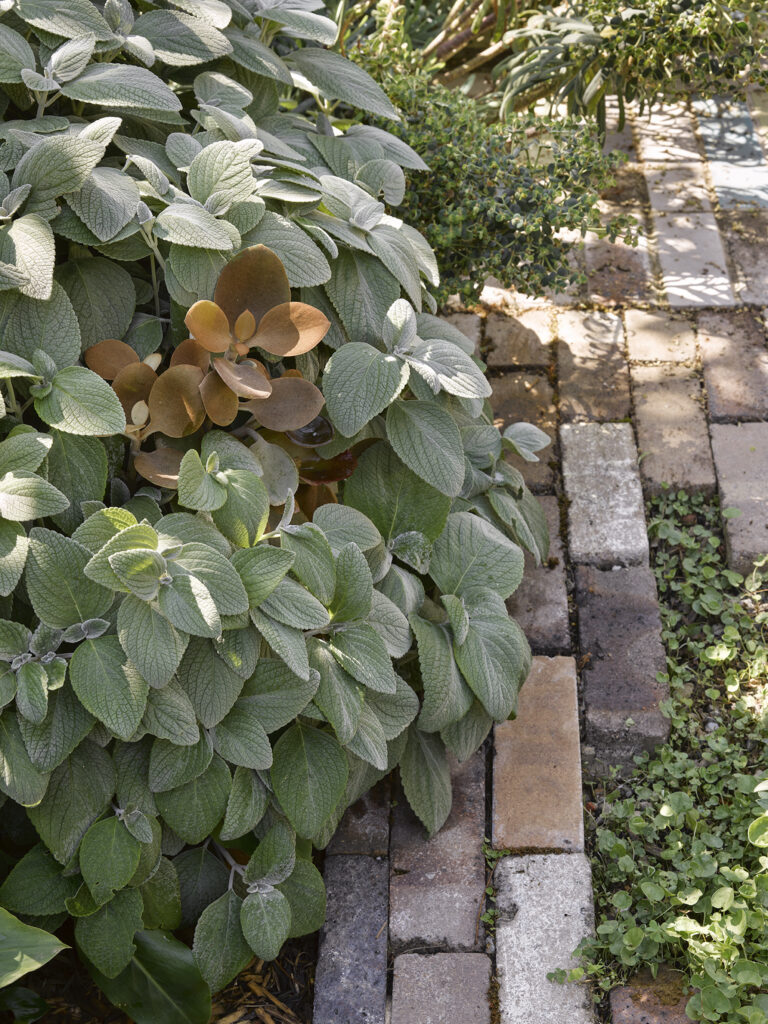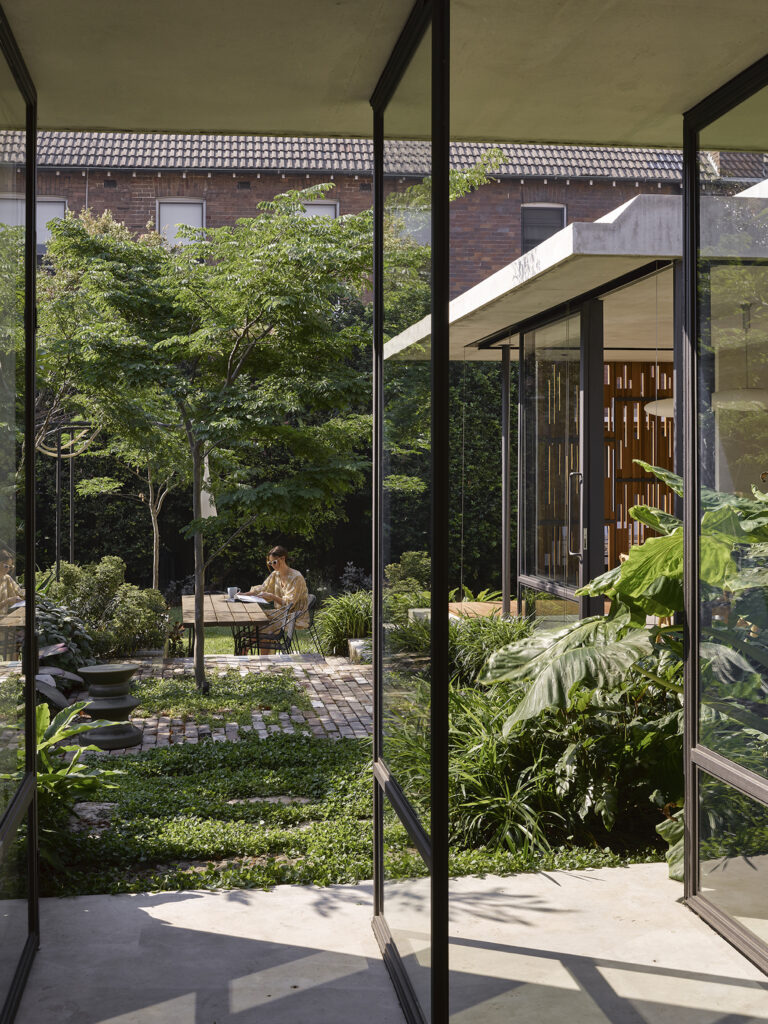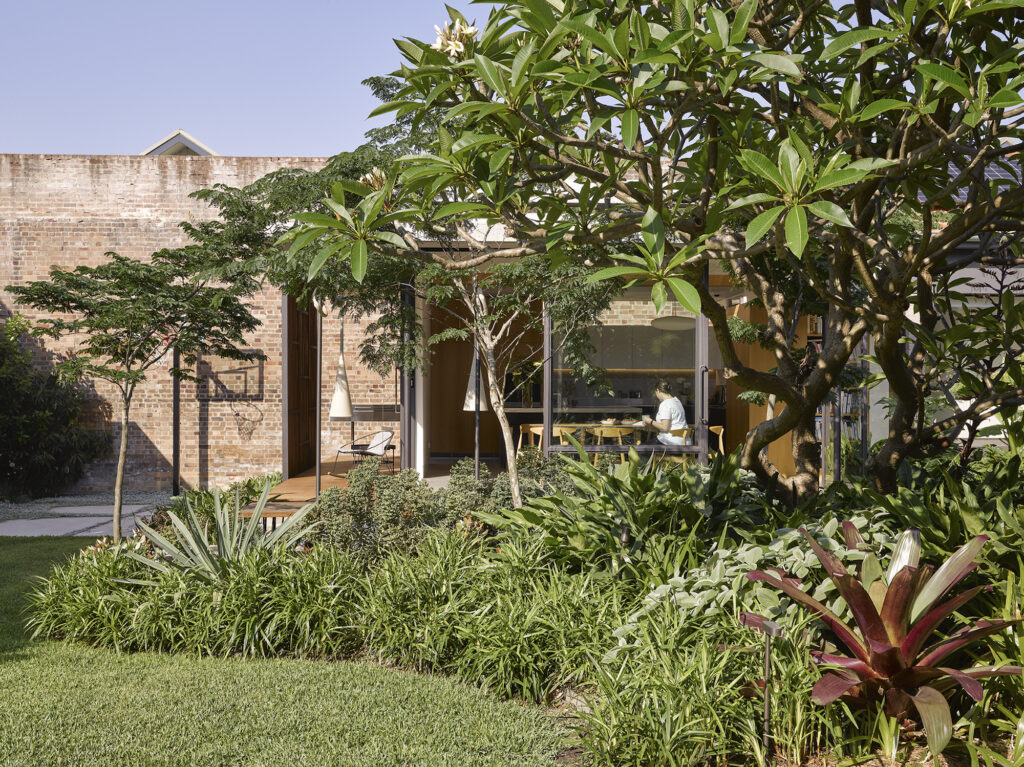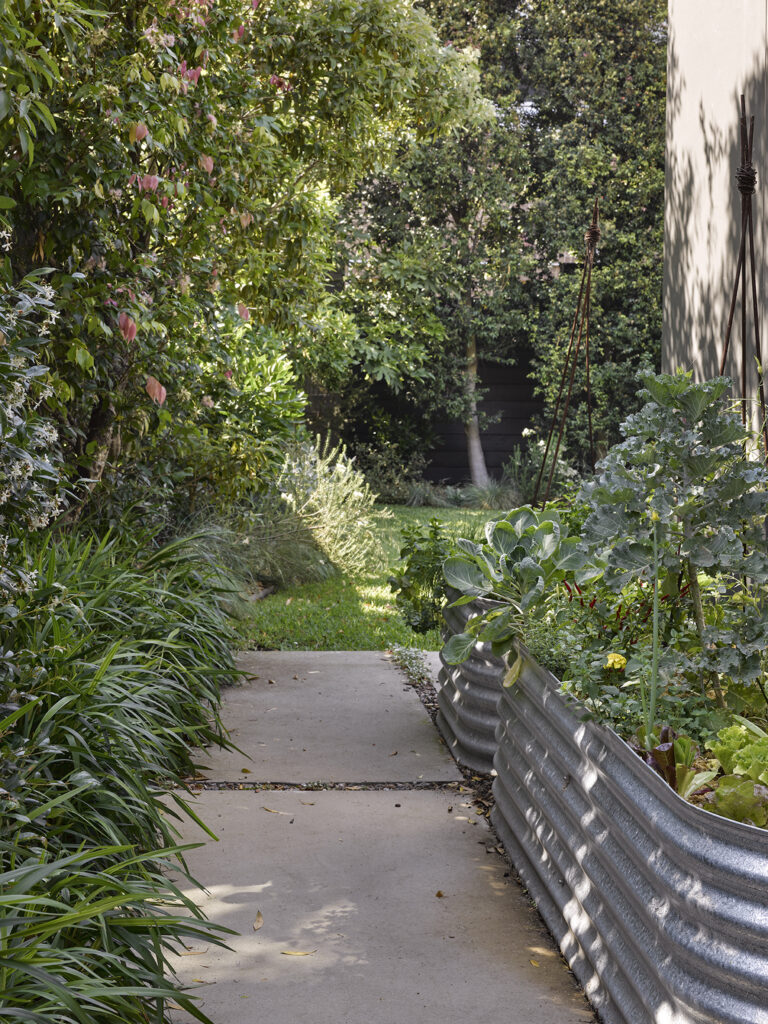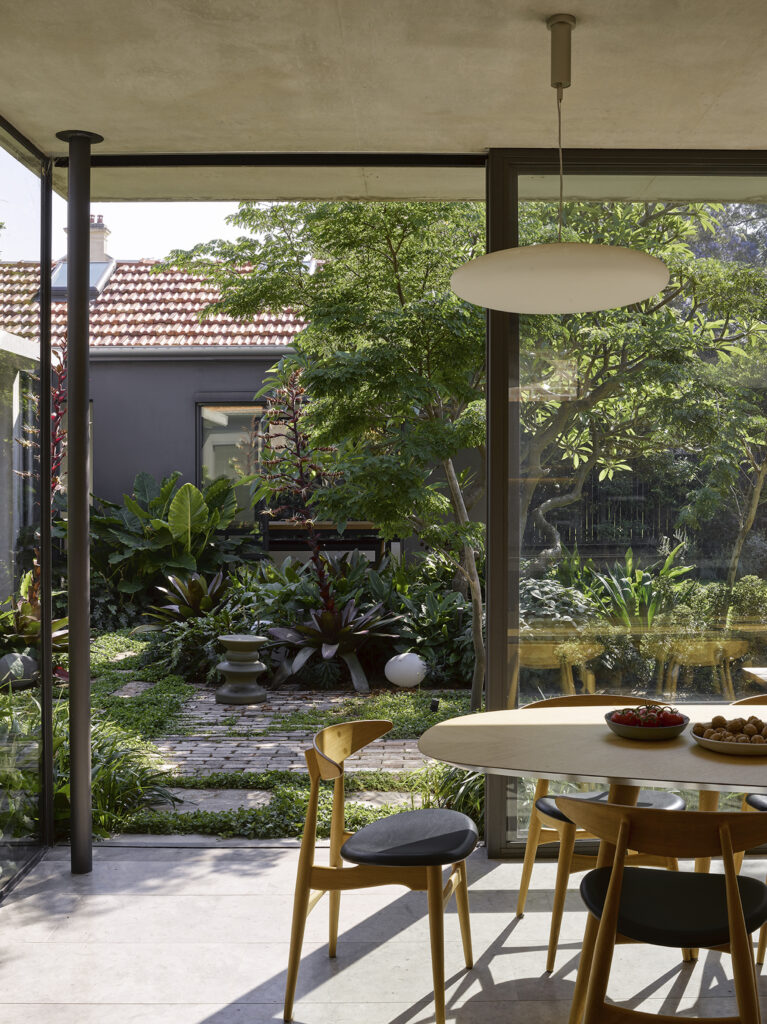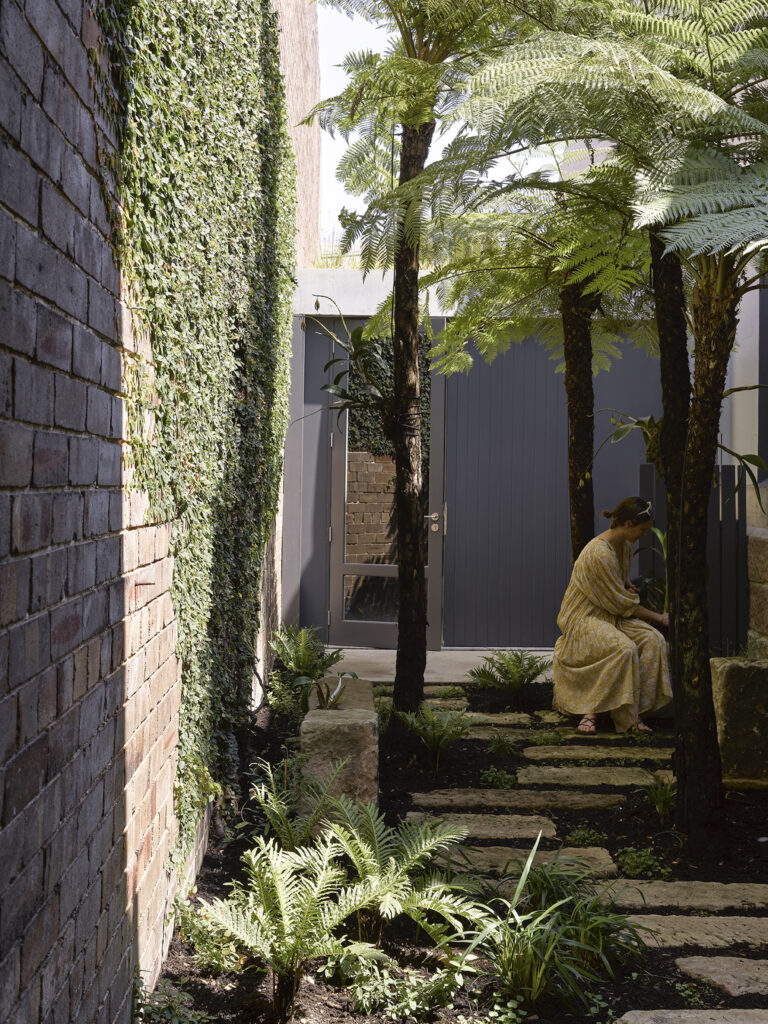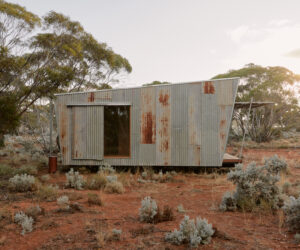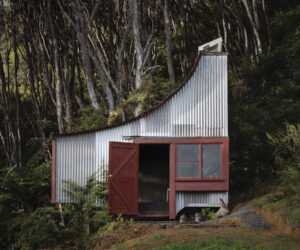Two Become One–Layered Garden Sanctuary
Landscape architect Emily Simpson merges architecture and landscape with layered and varied garden sanctuaries.
Blurring the boundaries is a common refrain in architecture, but it couldn’t be more apt than in this heritage house and garden in Glebe, Sydney. Wanting to combine two semi-detached houses to create one larger home, the clients engaged Welsh +Major to connect and expand the interior, and landscape architect Emily Simpson to envelope the house with a garden. Emily developed calming, playful and practical garden spaces that unite the two former properties and merge architecture and landscape.
Having grown up outside the Sydney metro area, the clients wanted to feel surrounded by gardens, with views of greenery from every room and varied spaces for them and their three children to relax, socialise, entertain and play. With a love of food, wine and cooking, they also wanted a productive garden and aromatic plants on the proviso that they could reinstate the boundary should they re-divide the houses in the future.
The front garden sets the tone for the intimate connection between house and landscape. Fragrant plants, including gingers and orange jessamine, screen the house from the street, while a lush understory offers variety and texture, and wisteria wraps around the veranda posts. Emily retained the existing frangipani and camphor laurel trees, and repurposed sandstone footings and bricks as stepping stones, pavement and bench seats. “We were fortunate to have a palette of beautiful sandstone blocks and convict bricks from the house’s existing foundations. These were stockpiled on site during construction and then reused as hardscape elements,” Emily says. She also incorporated glazed bricks into the bench seats, with the clients’ children helping select the playful pops of colour.
At the rear of the house, a central courtyard is a calm oasis that separates, screens and connects the encircling rooms – the living area, the new kitchen and dining pavilion, and the existing wing with the rumpus room. Glass doors open the interior to the courtyard, where a heritage frangipani is surrounded by a grove of leopard trees, and the sculptural canopies and pendulous flowers of two angel’s trumpets. Cardamom flourishes in the corners and sandstone steppers provide a pathway through the garden. The brick retaining wall doubles as bench seats for the outdoor dining table, which has two pendants above, mimicking the shape of the angel’s trumpet flowers. “Lighting was important for the clients and the garden is transformed in the evening into a magical place,” says Emily.
Beyond the courtyard, an open lawn provides space for the children’s sports and play, and a paved area for basketball also connects the kitchen to the barbeque. A hedge of tall trees around the edge of the garden screen the view – and noise – of the school behind, with native, aromatic and colourful plantings, such as lemon myrtle, citrus and flowering gum, attracting birds and bees for pollination.
The service areas down both sides of the house also thrive. A productive garden on the north side grows vegetables and herbs for use in cooking, while a native fern garden on the south side offers a cooler microclimate to retreat to on summer days. Emily used sandstone blocks as sculptural pieces and resting seats, and Sydney rock orchids attached to the blocks fill the air with sweet aroma in spring. This ferny garden is also kept cool by the creeping fig covering the brick boundary wall, and native grasses on the garage rooftop increasing landscape area and biodiversity.“The bedroom above looks down onto the roof. It’s a really lovely vista and softens the garage roof,” says Emily.
The family has found great joy in their garden, especially over the last two years, as it has grown into a layered, textural and varied sanctuary. There are different spaces and atmospheres for everyone to relax, socialise and have fun, and gardening has become a pleasure and joy.
